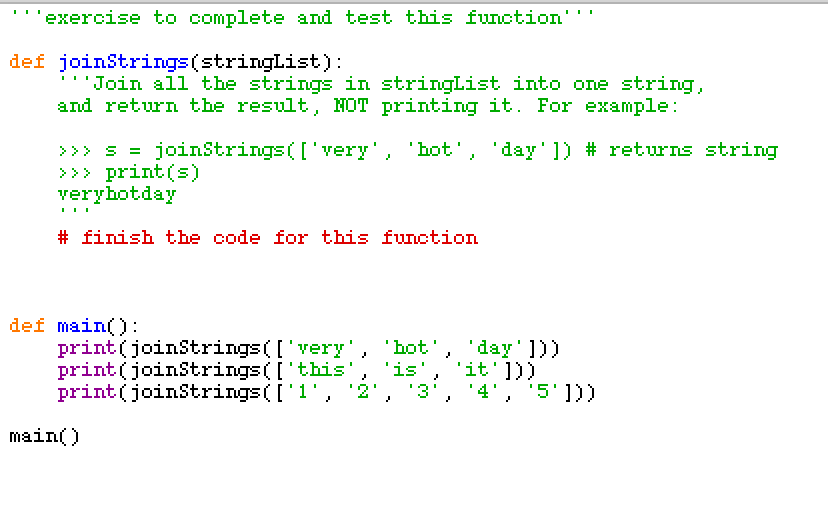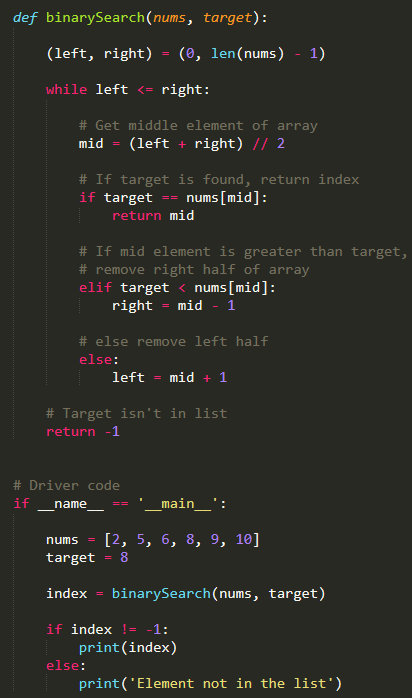How do you combine multiple lines in python for loop
How do you combine multiple lines in python for loop
In Python, when working with for loops, combining multiple lines can be a bit tricky if you're not familiar with the correct syntax and techniques. Here's a comprehensive guide to help you master this crucial aspect of Python programming.
Basic For Loop
Before we dive into combining multiple lines, let's first understand how a basic for loop works:
fruits = ['apple', 'banana', 'cherry']
for fruit in fruits:
print(fruit)
In this example, the for loop iterates over the list fruits and prints each element. The syntax is straightforward:
fruits is assigned a list of strings. Condition: There isn't one; we're working with an iterable (the list fruits) that's automatically evaluated in the loop. Action: Inside the loop, fruit takes on the value of each element in the list, and print(fruit) is executed.
Combining Multiple Lines
Now, let's focus on combining multiple lines within a for loop. You can do this by adding additional statements to the action part of the loop using indentation (spaces or tabs). Here are some examples:
1. Printing Multiple Valuesnumbers = [1, 2, 3, 4, 5]
for num in numbers:
print(f"Value: {num}, Squared: {num ** 2}")
This code prints each number and its square on separate lines.
2. Manipulating Stringswords = ["hello", "world", "!"]
result = ""
for word in words:
result += word + " "
print(result)
The output will be hello world !, with spaces between the words. You can adjust the concatenation logic to achieve different effects.
numbers = [1, 2, 3, 4, 5]
result = 0
for num in numbers:
result += num ** 2
print(f"Sum of Squares: {result}")
In this example, the loop calculates the sum of squares for each number and prints the final result.
4. Combining Conditions with Loopsnumbers = [1, 2, 3, 4, 5]
for num in numbers:
if num % 2 == 0: # even number
print(f"{num} is even")
else:
print(f"{num} is odd")
This code checks whether each number is even or odd and prints the corresponding message.
Additional Tips
Indentation matters: Always use consistent indentation to define the scope of your statements within the loop. Use meaningful variable names: Choose descriptive names for your variables, especially if you're working with complex logic or multiple lines within a loop. Keep it concise: Try to keep each statement within the loop as simple and straightforward as possible.By mastering these techniques, you'll be well-equipped to tackle more complex for loops in Python. Remember to always keep an eye on indentation, variable naming, and code readability!
How do you combine multiple lines in python using

Combining multiple lines into a single line of text is a common task in Python programming. This process is known as concatenation or string joining. There are several ways to accomplish this task, and I'll cover some of the most popular methods:
Using the+ operator:

The simplest way to combine multiple lines is by using the + operator. You can create a variable and assign it the initial value. Then, you can concatenate subsequent lines using the + operator.
line1 = "Hello, "
line2 = "world! "
line3 = "This is a test."
combined_line = line1 + line2 + line3
print(combined_line)
When you run this code, the output will be:
Hello, world! This is a test.
However, this approach has some limitations. For example, it's not efficient for large amounts of text or when working with variables that are difficult to type or read.
Using thejoin() method:
Another way to combine lines is by using the join() method from Python's built-in str class. This method concatenates all the elements in an iterable (like a list or tuple) into a single string, with a specified separator between each element.
lines = ["Hello, ", "world! ", "This is a test."]
combined_line = "".join(lines)
print(combined_line)
When you run this code, the output will be:
Hello, world! This is a test.
Using the join() method can be more readable and maintainable than concatenating with the + operator. It's also easier to handle cases where there are missing or extra lines.
Python provides several string formatting options for combining lines, including:
The%s placeholder: This is a simple way to insert variable values into strings. The .format() method: This method uses placeholders in the format string to insert values from variables. String f-strings (formatted string literals): These provide a more readable way to combine text and variables.
Here's an example of using the %s placeholder:
name = "John"
lines = ["Hello, %s" % name, "This is a test."]
combined_line = "n".join(lines)
print(combined_line)
When you run this code, the output will be:
Hello, John
This is a test.
These methods are all useful for combining multiple lines in Python. The choice of which one to use depends on your specific requirements and coding preferences.
In conclusion, when working with text data in Python, it's essential to understand how to combine multiple lines into a single line of text. The + operator, the join() method, string formatting options, and f-strings are all powerful tools for accomplishing this task.





























